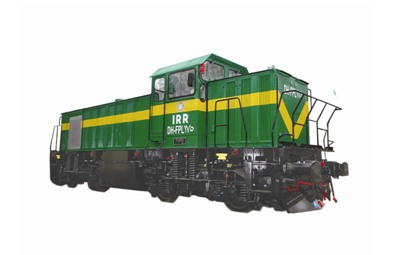Press release about transporting oil by rail from Bayji to Haqlaniyah in Iraq. The goal is to have two trains of 20 cars each per day
.
Thursday, 16 October 2008
By Cpl. Sean Coolman, Regimental Combat Team 5
HAQLANIYAH – Trains delivering precious crude oil continue to arrive here despite harsh conditions and obstacles.
Marines and Sailors with Civil Affairs Team 6, Detachment 1, 2nd Battalion, 11th Marine Regiment, Regimental Combat Team 5 are here to make sure the trains are running at full capacity and arriving at the train station without encountering any obstructions.
“We’re renovating the train station to have it operable so that trains can pass through and deliver crude oil to the offload station,” said Sgt. Nelson L. Neely Jr., 22, a machine gunner with CA Team 6, from Houston. “We go there and check on the project and see how the trains and tracks are doing.”
“We help manage the trains as they come in,” said Staff Sgt. Graham H. Webb, 26, team chief with CA Team 6, from Ripley, Tenn. “We work with the Iraqi Railroad to coordinate the movement of crude oil from Bayji to Haqlaniyah.”
The CA team has spent approximately $450,000 of Commanders Emergency Response Program (CERP) funds thus far on improvements on the railroad itself and railroad station, which supplies the refinery here with crude oil to be processed. The goal is to have two trains of 20 cars each per day, which should support the refinery here and produce 16,000 barrels a day.
“When they bring the trains in, the crude oil gets sent to the refinery and then distributed all around al-Anbar province,” said Webb. “Access to fuel by the people lowers fuel prices and helps the economy in al-Anbar province.”
An issue the railroad has encountered is frequent sand drifts, which can cover portions of the railroad and affect the number and regularity of incoming trains.
“The refinery here depends on the train station to get the oil,” said Webb. “We paid a contractor who uses a bulldozer to manually clear the tracks, and we also gave money to the train station to build a blower to mount on the front of the trains.”
Plans are also in the works for future improvements on an existing oil pipeline to bring in additional oil.
“There are plans to repair (an existing) pipeline (that would) bring in additional crude oil to the area,” said Webb.
On a recent visit to the train station by CA Team 6, Kahlid Kamil Hussni, an Iraqi contractor in charge of clearing the railroad tracks at the Haqlaniyah train station spoke warmly of the Coalition force members here.
“If it wasn’t for (CA Team 6) and the Americans, this project would never have happened,” said Hussni.
Source: Multi-National Force Iraq



